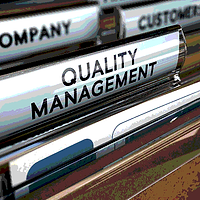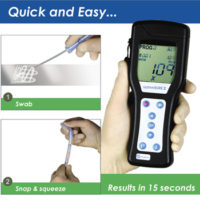Managing pests in a sensitive environment like a food processing plant is a “pay me a little now or pay me a lot later” choice. You can either do simple effective pest management in an ongoing manner or react to infestations after the fact—which could result in product contamination, recall and other serious profitability loss.
“Too often, pest management is seen as a reactionary process that demands chemicals to solve a problem, but that’s a risky and short-term approach,” says Ole Dosland, Director of Technical Training & E-Learning, with Copesan—Specialists in Pest Solutions (www.copesan.com). Copesan is an alliance of regional pest management companies that are united as a single entity for the sole purpose of providing quality pest solutions to businesses with locations throughout North America.
“Pesticides in food processing plants should be used on a justified-need-application only,” he says, “and should be prescription oriented, which means you apply exactly what is needed and only where needed. Also, the industry is moving away from using high concentrations of toxic chemicals, which limits the pest management toolbox. Old pesticides are disappearing and new pesticides, with more restrictive labeling, are entering the marketplace.”
The good news is that following a proactive Integrated Pest Management (IPM) program with emphasis on inspection, exclusion, sanitation and monitoring will pay ongoing dividends and require less toxic chemical usage.
Dosland recommends seven basic steps that a food processing manager can take to ease the burden of pest management before pesticides are necessary:
1. Keep doors shut. Unscreened or open doors violate good pest exclusion, security, safety, hygiene and microbial management practices. Food plant workers often leave unscreened building doors open late in the evening and early in the morning when pests are active, and delivery trailers staged for loading regularly leave their doors open throughout the evenings. This problem indicates a lack of education and enforcement. When employees understand the consequences of open doors, the problem goes away with little reinforcement.
2. Keep windows, screens, exhaust louvers and air vents in good repair. These openings also violate good pest exclusion and microbial management practices. Open windows, torn screens, and dirty exhaust louvers and air intake vents allow anything in the vicinity, from bacteria and debris to insects and rodents, access to a sensitive environment. This problem is sometimes compounded with a negative airflow, providing a suction of potential contaminants. A pest management service provider familiar with inspecting large processing buildings, can monitor these problem areas, and perform airflow studies periodically to ensure that building renovation and equipment additions have not created an airflow change.
3. Keep the facility clean. Poor sanitation violates pest management, product safety, workplace safety, environmental compliance, hygiene and microbial management practices. Food, water and shelter is considered the triangle of life. Utilizing a master cleaning schedule with a focus on deep cleaning consisting of a predetermined frequency, cleaning method, responsibility and evaluation is critical to keeping a place clean. Remember that hidden areas in the lower part of the facility, such as utility chases and drains (especially those not active or broken), can be at higher risk because they lead to an out-of-sight/out-of-mind problem. Similarly, rooftops (especially near air intakes), ceiling voids and the entire trash/waste handling process in upper sections of the facility can also be at higher risk. Keeping these areas clean and dry is beneficial to preventing a number of problems.
4. Use effective monitoring techniques to identify infestations before they get out of control. Sticky traps and insect light traps are especially effective. Both work 24 hours a day and provide valuable information. Monitoring devices can also be used in combination to increase effectiveness. For example, a multiple-catch rodent device with a sticky trap containing an insect pheromone is a powerful monitoring combination that ca be viewed like a video in real-time.
5. Keep first in/first out (FIFO) in place. Poor FIFO can lead to problems with pests, product safety and security. Although FIFO is usually associated with finished products, areas that house research and development, new products, held products awaiting disposition, and lesser- used ingredients, pallets and packaging supplies are often overlooked. When food and shelter sit around, it is only a matter of time until they become contaminated with pests.
6. Keep good documentation. It is important to document your pest control maintenance tasks and monitoring data, as well as the corrective steps taken to deal with infestations or other problems that arise. As an FDA investigator once told Dosland, ”If it is not written, it is not so.” Documenting conducive conditions and problematic areas with the corresponding resolutions leads to a well-run operation. This is especially true from an outside auditor’s viewpoint.
7. Select reputable third-party pest management providers. Work with a professional pest management company that is knowledgeable about the basics of pest exclusion, sanitation, FIFO and documentation practices. Getting experienced guidance on best practices is the best way to eliminate pest problems before they happen and deal with the ones that do before they impact your operation’s profitability.
Back-to-Basics Pest Management Pays Dividends to Food Plants




